Information
RelatedInformation
undefined
Strategically located between Europe, Asia, and Africa, the Balkans serve as a vital global transportation hub. Historically contested by Western powers, this region has long been dubbed "Europe's powder keg" while preserving rich historical sites and cultural treasures, including iconic cities and attractions. Daobo Travel has curated a 16-day Balkan Eight-Country Tour for you. Below is the detailed itinerary:
Day 1: Beijing-Capital Airport:
Meet at the designated time. The tour leader will brief participants at the airport, with dedicated staff assisting with boarding procedures before flying directly to Vienna via Air China.
Day 2: Beijing-Vienna-Szagrebo (380 km) Flight CA841 0240-0620 Estimated flight duration: 11 hours.
Upon arrival, complete immigration procedures. A shuttle bus will pick up guests to begin our European adventure. Journey to Croatia's "Secret Garden": Zagreb (Official Guide Included) -Honored as Lonely Planet's Best European Destination, Zagreb blends culture, art, music, architecture, and culinary delights. [St. Stephen's Cathedral] As Croatia's tallest structure, this Gothic masterpiece houses relics of the Virgin Mary Ascension and two royal patrons, St. Stephen and St. Ladislaus. Its sacristy showcases exceptional architectural value. The cathedral's bell tower can be seen from many parts of the city. [Stone Gate] (About 15 minutes to see) A stone gate guarded by the Virgin Mary, housing a portrait of the Madonna and Child. Legend has it that during a fire in 1731 AD, all other structures were destroyed except for the stone gate bearing the Virgin's image, which miraculously remained intact—a divine sign that made it a bustling pilgrimage site. [St. Mark's Square] (About 20 minutes to visit) Once the most prosperous area of Galatz, this street still features ancient gas lamps lit daily by dedicated workers, preserving its historical glory. The corner pharmacy, established in 1355, holds a special place in local lore: it was operated by Dante's grandson after his emigration from Italy, with an inscription on its wall documenting this family legacy. [St. Mark's Church] (About 15 minutes to visit) A Gothic-style building housing works by the renowned Croatian sculptor Mestrovic. Its roof is a standout feature, adorned with colorful tiles and a mosaic emblem featuring the coats of arms of Croatia's major regions on the left and Zagreb's city coat of arms on the right, making it perfect for photo ops. Historical traces permeate every corner, narrating legendary stories of the past. The square's markets and cafes seamlessly blend history with modernity, inviting visitors to experience the city's leisurely lifestyle. Rebuilt after wartime destruction, Zagreb stands as a beautiful city steeped in history and culture, having nurtured countless historical figures, cultural innovations, and world inventions. The ancient simple streets and alleys and city gates, the neoclassical architectural style, the whole city exudes a strong cultural and artistic atmosphere of different periods.
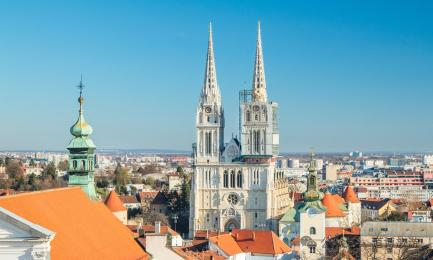
Day 3: Zagreb-Pritvica Lakes National Park-Zadar (280 km)
After breakfast in the hotel, we are ready to start our day.
[Plitvice Lakes National Park★] (Admission included with guided tour, approximately 2 hours) Known as the "Sixteen Lakes", this renowned Croatian national park is celebrated for its diverse wildlife and breathtaking landscapes, often referred to as "Croatia's Jiuzhaigou". Winding wooden bridges connect the lakes, offering both scenic viewing points and convenient access routes. Located in a karst terrain area, the mineral-rich waters create a unique coloration. Particularly striking are the trees submerged in the water, which develop a weathered bronze patina that makes their bark remarkably smooth and resistant to decay, forming rare underwater jade tree wonders. The calcified formations feature cave shapes resembling houses and arches, with some structures reaching depths of 4,000 meters.
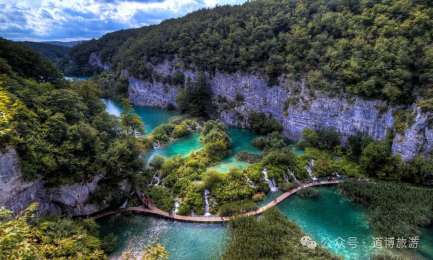
Day 4: Zadar-Sarajevo (Approx. 360 km)
After breakfast at the hotel, we prepare to embark on today's journey. [Zadar★] (Official Guide Included) Zadar, located along the Adriatic coast, boasts centuries-old preserved cultural heritage and is the birthplace of Croatia's first novel and early Croatian-language newspapers. This coastal town radiates Mediterranean charm. [Sea Organ] (20-minute tour) The Sea Organ, nestled by the Adriatic, creates enchanting organ-like melodies through sea breezes. Sitting by the crystal-clear waters while listening to its harmonious tones is truly delightful. [Zadar Gate] (20-minute tour) Built by Venetians in 1543, this iconic gateway features a central flying St. Mark's Lion statue flanked by guardian horse figures, symbolizing Zadar's historical legacy. [Sarajevo★] (Official Guide Included) Known as "Europe's Jerusalem" for its religious diversity, Sarajevo maintained until the late 20th century the rare coexistence of mosques, Catholic churches, Orthodox cathedrals, and synagogues. Additionally, it holds the distinction of being the world's second city with continuous tram operation. The rapidly revitalizing city center now bears few traces of wartime turmoil, while its unique blend of influences from neighboring empires adds to Sarajevo's captivating charm. As one of the easternmost cities in Europe, its mosques, squares, and unique architecture embody the essence of history. [Huangbao Ruins] (approximately 25 minutes to visit) was originally an Ottoman-era defensive structure built with rough stones into an irregular octagon. After two renovations in 1883 and 1903, this small hillside also features a scene more familiar to the Chinese people: the movie "Walter Defends Sarajevo", where a German officer later on the hillside says, "Sehen Sie diese Stadt? Das ist Walter". This is the hill overlooking the entire city. Standing here allows visitors to admire the cityscape of Sarajevo while also seeing the vast white cemetery below, creating an extremely spectacular view that perhaps better illustrates what the city has endured. [Old Town of Vasiljevo] (approximately 90 minutes to visit) boasts the most distinctive and colorful downtown area in the country, where one can find the movie scenes from "Walter Defends Sarajevo": [Bell Tower], [Clock Shop], [Blacksmith Street], [Gezjuselbeg Mosque] with its green dome, and the [War Museum]. [Latin Bridge] (approximately 15 minutes to visit) On June 28,1914, Serbian youth Prince Archduke Franz Ferdinand of Austria-Hungary shot himself near the Latin Bridge in central Sarajevo, triggering World War I.
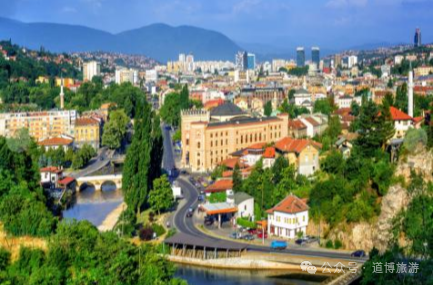
Day 5: Sarajevo-Mostar-Nem (approximately 210 km)
We will begin today's itinerary. [War Tunnel Museum★] (30-minute guided tour) Relive the "Yugoslavia" era by walking through the dangerous wartime tunnels of Sarajevo, experiencing the brutality of war that evokes deep sighs. [Mostar★] (Official guide included) As a key destination in Bosnia and Herzegovina, Mostar's historic old town centers around its iconic Old Bridge. The area features a bell tower, Ottoman-era public baths, mosques, monasteries, and ancient towers. The WWII Partisan Memorial stands as a symbol of the city. The Old Bridge and its surroundings were designated a UNESCO World Heritage Site in 2005. The city's architecture retains bullet holes from wartime, serving as a reminder to cherish peace. [Old Town of Mostar] (40-minute tour) Cross the deep valley of the Neretva River, first recorded in 1442. The town showcases Turkish-style architecture and historic bridges including stone arches, prisons, umbrella workshops, and restaurants. Whether viewed east or west, the valley remains breathtakingly beautiful with its crystal-clear river and the town's unadorned charm. [Ancient Mostar Bridge] (15-minute tour) This 427-year-old bridge spans the picturesque Neretva River, a UNESCO World Heritage Site and one of the most famous attractions in Bosnia and Herzegovina and the Balkan region.
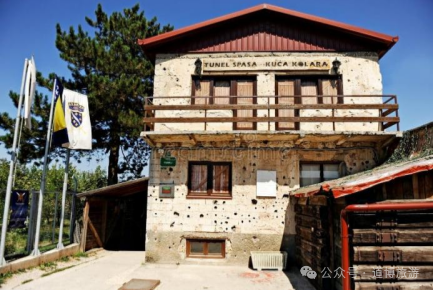
Day 6: Nem-Dubrovnik-Budva (Approx. 160 km)
After breakfast at the hotel, we prepare to embark on today's journey. [Dubrovnik★] (Official Tour Guide Included) The image of Dubrovnik Old Town is featured on the reverse side of Croatia's 50-kuna banknotes issued between 1993 and 2002. This city is celebrated as a "living museum" where natural and man-made landscapes blend seamlessly! Historically, many Sephardic Jews were drawn to this historic seaport. George Bernard Shaw, another admirer—— of Dubrovnik, remarked during his visit in 1929: "If you want to see what heaven looks like, come to 'Dubrovnik'!" [Dubrovnik Old Town Walls★] (Ticketed Tour, Approx. 1.5 hours) Stroll around the magnificent walls, gaze at the sapphire-blue sea, enjoy the pleasant climate, and admire the well-preserved medieval walls that live up to their reputation as the "Pearl of the Adriatic." Stretching 1,940 meters with 25-meter-high cliffs at the sea's edge, these walls form Europe's largest and most intact complex structure. Baroque-style red-roofed buildings and marble streets showcase 14th-century pharmacies, cathedrals, and monasteries. Every step here brings surprises, breathtaking views, and endless joy-truly a journey of delights.
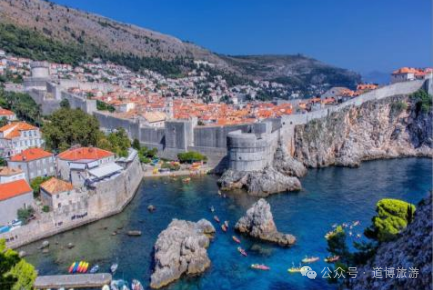
Day 7: Kotor
This UNESCO World Heritage Site, one of the best-preserved medieval towns in the Adriatic, exudes a warm and peaceful atmosphere with its charming cafes and restaurants where you can savor the town's charm. [Kotor Fjord Cruise & Island Visit-Saint Mary's Rock Island ★] (Approx. 60-minute cruise tour): We'll then head to Kotor Fjord for a boat tour of the only fjord in Southern Europe-Kotor Fjord. This Yugoslav Adriatic coastal bay stretches 32 kilometers inland, flanked by towering mountains and a narrow, elongated strait. Visitors can admire breathtaking fjord scenery and medieval towns dotted with ancient architecture. Visit Saint Mary's Rock Island (Approx. 45 minutes). This 3,030-square-meter island boasts a mysterious and sacred history along with enchanting natural landscapes. Legend traces its origins to 1470. [Kotor Old Town] (Approx. 40 minutes): Located at the fjord's endpoint, this well-preserved medieval town is surrounded by Lovcen Mountain, Vrmac Mountain National Park, and the Adriatic Sea. The town's atmosphere radiates warmth and tranquility, with cafes and restaurants dotting the area. Nearby buildings evoke a medieval ambiance, creating an immersive experience of bygone eras. Nestled beneath the steep slopes of Mount San Giovanni, the Old Town preserves one of the best-preserved medieval urban settlements along the Mediterranean coast. Its ancient walls, stretching 5 kilometers long, 20 meters high, and 10 meters wide, encircle the historic center. Museums, churches, a grand cathedral, palaces, cobblestone streets, squares, intricately carved staircases, and city gates create a fairy-tale atmosphere. Designated as a UNESCO World Heritage Site, this UNESCO-listed gem features coastal areas near Budva known as the "Budva Riviera," inspired by the Mediterranean's iconic coastal tourism destination. As Montenegro's renowned tourist hotspot, Budva captivates visitors with its pristine beaches, vibrant nightlife, and distinctive Mediterranean architecture. The Old Town of Budva (approximately 60-minute tour), situated on a peninsula with roots tracing back to the 15th century, showcases medieval fortresses, towers, and gates within its walls. This unique urban landscape blends narrow streets, quaint squares, cafes, boutiques, restaurants, and galleries. Summer months see it transform into a "Theater City" with concerts, performances, and exhibitions. The HotelSplendid in the town served as the filming location for "Casino Royale" from the James Bond series. Many Hollywood stars choose Montenegro as a vacation spot away from the hustle and bustle of the entertainment industry for a while, with Brad Pitt and Angelina Jolie once staying there.
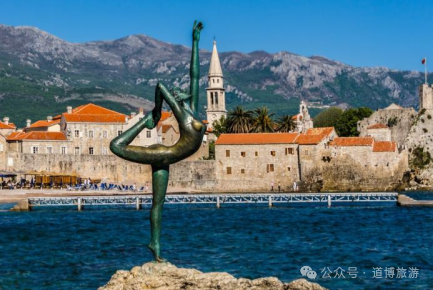
Day 8: Budva-San Stefano Island-Tirana (Approx. 180 km)
After breakfast at the hotel, we prepare to embark on today's journey to Tirana, Albania's capital and the nation's largest city. As the country's economic, cultural, and transportation hub, Tirana features picturesque Italian-style buildings from the 1930s lining its tree-lined avenues, complemented by vibrant street markets and mosques. The coexistence of socialist and realist art with a lively nightlife makes this the last mysterious landmass and the last beacon of light in Europe. [San Stefano Island] (Distant View) A coastal island connected to the mainland by a narrow passage. After World War II, it was purchased by a wealthy businessman and transformed into a luxury resort hotel, now off-limits to non-residents. [Tirana] As Albania's capital and largest city, Tirana serves as the nation's economic and cultural center. [Skanderbeg Square] (Approx. 20-minute Tour) Skanderbeg Square offers a perfect spot to experience local festivities, where children zoom through orange toy cars at your feet. The iconic equestrian statue of Skanderbeg in the southern square stands as its landmark. [National History Museum] (Approx. 15-minute Visit) As Albania's largest museum, the National History Museum houses most of the country's ancient artifacts. The museum's front is decorated with the Albanian Mural of the Triumphs, which reflects all the victories Albania has achieved from the time of the Illyads to the Second World War.
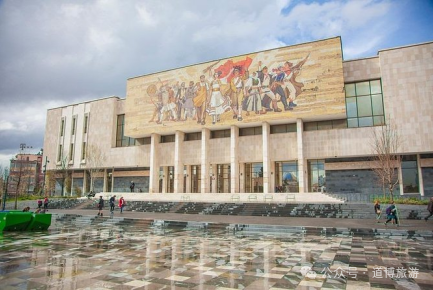
Day 9: Tirana-Kospija (Approx. 225 km).
After breakfast at our hotel, we will begin today's itinerary. [Kospija ★] As the largest city in Macedonia, Kospija is home to one-third of the country's population and serves as its political, cultural, economic, and academic hub. [Sintar District] The city center is divided into two districts by the Vardar River. The northern bank houses the historic Serbka district, home to the Old Bazaar – the city's historic core. The southern bank forms Sintar District, featuring modern architecture, picturesque squares, and numerous sculptures that define its urban identity. [Old Bazaar] This area, renowned for its concentration of mosques, showcases typical Ottoman architectural styles. The two main domes are flanked by five smaller ones at the entrance. [Kale Fortress] (15-minute drive) Built in the 6th century on the left bank of the Vardar River, this fortress offers panoramic views of the city. On May 6th, Macedonia's St. George's Day, Gypsies dress in traditional costumes and perform lively dances at Kale Fortress and public parks, believing Saint George's blessings bring bountiful harvests.
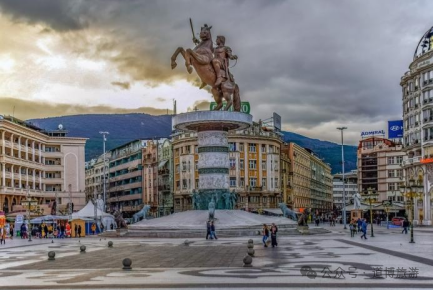
Day 10: Skopje-Sofia (Approx. 240 km).
After breakfast at the hotel, we will begin today's itinerary. [Sofia] As Bulgaria's capital and political-economic-cultural hub, Sofia is situated in the mountainous Sofia Basin of central-western Bulgaria. Its strategic location along vital transport routes connecting the Adriatic Sea, Central Europe, Danube River, Black Sea, and Aegean Sea through mountain passes and valleys makes it one of Europe's key transportation centers. [St. Alexander Nevsky Cathedral] (Approx. 20-minute exterior visit). This Orthodox cathedral, built in the Neo-Byzantine style, serves as the seat of Bulgaria's Patriarchate and ranks among the world's largest Orthodox churches. [St. Sophia Cathedral] (Approx. 15-minute exterior visit). This ancient architectural masterpiece exemplifies Byzantine artistry, with the city's name originating from this sacred structure. Constructed in the mid-6th century, the cathedral features a main hall flanked by twin towers and a domed dome. Its interior showcases intricate early Christian mosaics depicting floral and animal motifs, while the surrounding area contains burial sites predating the church's construction. [Presidential Palace] (Approx. 15-minute exterior visit) [National Gallery Royal Palace] (Approx. 15-minute exterior visit) [Gilded Bronze Statue of St. Sophia] (Approx. 15-minute exterior visit)
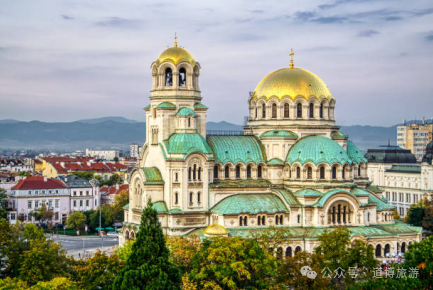
Day 10: Sofia-Bucharest (approximately 380 km)
We prepare to embark on today's journey. [Bucharest] This Romanian capital redefines its glory by blending modernity with history. At first glance, Bucharest's architecture appears dazzling, yet this is a captivating mix. Between dull modern apartment complexes stand Byzantine-style buildings, century-old churches, and Art Nouveau-style structures surviving earthquakes and wars. [Romanian Parliament Building] (Approximately 15-minute drive) Originally called the "People's Palace," this building was ordered by Romania's late leader Nicolae Ceausescu. Construction began in 1984, covering 365,000 square meters. It ranks second only to the Pentagon in the United States in floor area, with 12 above-ground floors reaching 84 meters high and four underground levels extending 92 meters deep. All materials used in the building were sourced domestically. The tour will take you through Caraganda Square, Victory Square, the 192-year-old Triumphal Arch, Stalinist-style architecture, and picturesque streets – this is modern-day Romania. [Romanian Athenaeum] (Approximately 15-minute drive) The Romanian Athena Temple, a grand neoclassical building, serves as the city's main concert hall. Built by French architect Albert Galleron in 1888, it stands as a testament to architectural heritage. [Gull Park] (About 20 minutes to visit) As the name suggests, there are thousands of gulls in groups in Gull Park, and the scenery is picturesque.
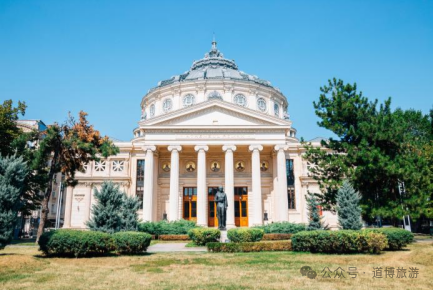
Day 12: Bucharest-Sișiu de la Văs (Approx. 280 km)
After breakfast at the hotel, we set out on today's journey. Our first stop is [Sișiu de la Văs], known as the "City of Oaks" and celebrated as Romania's foremost cultural gem. Built over 800 years ago, this medieval town stands as the most Germanic-inhabited area in Transylvania, where ancient castles and precious artifacts showcase its medieval splendor. The 19th-century composers Franz Liszt and Johann Strauss II were both drawn to this historic site. Preserved medieval military fortifications, recognized as UNESCO World Heritage Sites in 2004, add to its charm. [Traditional Folk Culture Museum Muzeul Civilizatiei Populare Traditionale Astra★] (30-minute visit) Explore the world's second-largest open-air museum featuring reconstructed traditional Romanian village architecture and rural artifacts. The iconic Sișiu de la Văs Windowed Roof – resembling giant eyes gazing from afar – is a cultural highlight. [Republic Square](15-minute tour) This rectangular square has witnessed nearly all major historical events in the city. Gothic-style buildings surrounding the square each feature uniquely designed gates, creating a distinctive architectural ensemble. The architectural styles of the gates are distinctly different, all featuring semi-circular facades adorned with intricate carvings on their pillars and lintels. Some lintels even bear unique family crests carved by medieval aristocrats as "family emblems". All buildings remain well-preserved, with the most representative being the Bruckenthal Palace on the square's side. [March 6th Square] (Approximately 15-minute tour): Known locally as "Little Square" in Sibiu, it stands in contrast to Republic Square. This compact square is surrounded by well-preserved ancient buildings showcasing diverse architectural styles. Each structure has a unique design, with walls painted in varied hues that create a distinctive character. Remarkably, even commercial buildings now use this area retain original historical artifacts to attract visitors, making every sight a delight that keeps tourists coming back for more. [Lutheran Cathedral] (Approximately 10-minute exterior tour): As the most famous Gothic church in Sibiu, the traditional religious and political center of Transylvania, Romania, it stands at HUET Square in the Upper Town. Its majestic 73.34-meter-high spire is the city's tallest structure. The entirely wooden church offers panoramic views of the old town from its rooftop and features live organ performances. [Orthodox Metropolitan Cathedral] (Approximately 10-minute exterior tour): As Romania's second-largest monastery, this Orthodox cathedral boasts stunning Byzantine-style domes of varying sizes. The interior of the church is very tall and magnificent. At night, many local people come here to do evening prayers.
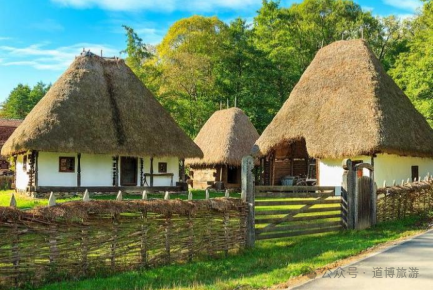
Day 13: Sibiu-Belgrade (approximately 430 km)
We prepare to embark on today's journey. [Belgrade★] (Official Guide Included) Nestled in the hills between the Sava and Danube rivers, this strategically positioned fortress is easy to defend but difficult to attack. However, such terrain often attracts enemy attention, and throughout its 2,300-year history, Belgrade has been destroyed and rebuilt over 40 times. Behind these fortresses lies the Old Town of Belgrade, where buildings from the last two centuries are irregularly distributed. These structures have evolved into cafes, clothing stores, bars, and restaurants. Strolling through this environment, sipping coffee, and browsing shops is truly delightful. [Site of the Chinese Embassy in Yugoslavia] (Approximately 15 minutes to visit) As a must-see attraction for Chinese citizens visiting Belgrade, its significance speaks for itself—the history should never be forgotten. In the early hours of May 8, 1999, the Chinese Embassy in Yugoslavia located in downtown Belgrade was bombed by NATO aircraft, resulting in the collapse of the building and the sacrifice of three lives. A modest monument now stands at the site, with flowers placed beneath it. [Kalemegdan Castle★] (Approximately 20 minutes to visit) The castle earned its name "White City" (Kalemegdan) from its original white exterior. Situated at the confluence of the Sava and Danube rivers, the ancient castle serves as a testament to the city's history and remains Belgrade's iconic tourist attraction and leisure destination. The castle has been repaired and expanded many times in its history, and the Roman and Austro-Hungarian architectural styles can still be seen today, but most of the existing ruins were built during the Turkish rule. Composed of huge stones, it was a military stronghold since the Celtic rule.
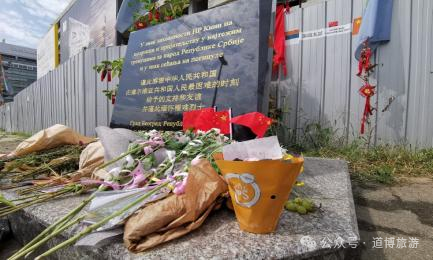
Day 14: Belgrade-Budapest (Approx. 380 km). After breakfast at the hotel, we prepare to embark on today's journey. [St. Sava Cathedral★] (Approx. 20-minute guided tour) Sveti Sava Cathedral, the largest extant Orthodox church in the world, remains partially unfinished. Construction began in 1935 but was interrupted during Hitler's regime and halted under Communist rule. A visit here allows you to appreciate how insignificant one feels beneath its massive dome. [Yugoslav History Museum★] (Tito's Mausoleum) (Approx. 20-minute guided tour). The museum comprises three sections: the May 25th Museum, the Old Museum, and Tito's Mausoleum. Named after Tito's birthday on May 25th, the main museum is called "May 25th" in tribute to this date. As Tito was passionate about gardening during his lifetime, his remains were interred in a floral mausoleum after his death, earning it the nickname "Floral Mausoleum." This rectangular white marble tomb houses artifacts donated by Tito's comrades and Yugoslav visitors.
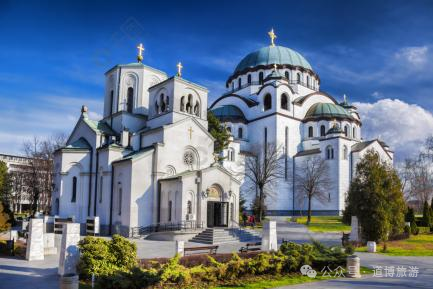
Day 15: Budapest-Beijing Reference flight: CA720 1150-0400+1 Estimated flight time: 9.5 hours
After breakfast in the hotel, go to the airport according to the flight time, check in for tax refund and check in, and take the flight back to the country.

Day 16: Beijing
After arriving in Beijing, you will be transferred to various destinations by chartered bus that day, concluding your delightful and romantic classic European tour! Upon arrival at the airport, please hand over your passport and boarding pass to the tour leader for visa cancellation procedures at the embassy. According to embassy requirements, some guests may be notified for an interview and visa cancellation. Our company representative will be waiting at the embassy entrance. Please prepare for any additional visa cancellation fees yourself. Thank you for your cooperation!
[Travel Highlights]
- Departing city: Beijing, let you easily feel the convenience of starting from your doorstep.
- Preferred airline: China International Airlines is selected for direct flights with two points of entry and exit to avoid the trouble of transfer.
- Preferred accommodation: Select 4-star hotels with local online reviews and stay for 2 nights with 5-star online reviews.
- Preferred meals: Breakfast is served in the hotel, with a standard meal of 8 dishes and one soup or local specialty. Four special meals are complimentary: Dubrovnik squid rice (noodles) + Kotor seafood meal + Mostar finger meat strip meal + Belgrade barbecue meal.
- Preferred vehicles: air-conditioned buses for the whole five years, professional foreign drivers to provide you with preferred transportation guarantee.
- Preferred leader: Chen Zhaotong, a gold medal professional leader who has served the blog people of Dao, will provide services throughout the whole process.
- Worry-free insurance: Give away overseas rescue insurance, one insurance, worry-free, let you travel with peace of mind.
- Careful arrangement: give a conversion plug, full WiFi-2 people per unit, let you share the wonderful moments of the journey at any time.
- Careful housekeeper: 7*24 hour domestic housekeeper service, to ensure your smooth travel.
[Unusual Journey & Lakeside Mountains]
- Plitvice National Park★, a UNESCO World Heritage site, is made up of 16 natural lakes and is known as the "European Jiuzhaigou".
- Kotor Fjord Cruise ★—The Mediterranean's only fjord, where the most breathtaking encounter between land and sea began in Earth's early days. The Black Mountain Coast stands as this legendary meeting point. Ascend to Virgin Mary Island, a sacred land where breathtaking beauty and spiritual essence coexist, celebrated as "God's Tears". Explore Pelast, hailed as "Venice's Phantom", where medieval towns dot the landscape like scattered stars, transporting visitors through time.
- Kotor Fjord-Europe's southernmost fjord, with spectacular fjord views and scattered medieval towns and buildings.
- Adriatic Sea-enjoy the Adriatic sea and enjoy the beautiful scenery of the sea and sky.
[Cultural Heritage & World Cultural Heritage]
Zagreb-The Croatian capital, home to Europe's largest number of churches, the most beautiful museums and a slow-paced metropolis.
Zadar-a 3,000-year-old city, a living treasure of Croatian cultural heritage.
- Dubrovnik-Nestled on a mountain and by the sea, it is famous for its charming scenery and is known as the "Pearl of the Adriatic".
- Budva Ancient City-The ancient city was designed by the Venetians and is full of Roman style from the Republic of Venice.
- The town of Persepolis, a miniature Venice, has 16 Renaissance churches and 17 luxurious buildings belonging to historic families.
- Cuttor, one of the most intact medieval cities along the Adriatic coast, is known as the "City of Miracle in the Fjord".
- The walls of the ancient town of Mostar are still clearly visible. The bullet holes and destroyed buildings of the civil war seem to tell the story of the civil war.
- Mosart Old Bridge-Built in 1557 to replace the log suspension bridge, destroyed during the civil war in 1992-1995, restored in 2001-2004.
- St. Savo ★ -The cathedral is the largest Orthodox church in the world to date and is still not fully completed.
- Muzeul Astra★—Europe's largest open-air museum and the most complete museum (traditional architecture, handicrafts, activities, exhibitions, etc.), with more than 10 kilometers of alleys and over 400 wooden, stone, and brick buildings reconstructed in the museum to illustrate the daily life of ancestors living in Romanian villages.
- Kalemedan Castle ★ -Enter the "white City" Belgrade, the source of its name.
- Sibiu-one of the most prosperous cities in Romania, has been selected as "one of the eight best places to live in Europe".
[Movie Memory & Historical Memory]
- Huangbao ruins-German Gestapo officers stand on Huangbao overlooking the city in the film "Walter Defends Sarajevo".
- The Bridge of Latinus-The assassination of Archduke Ferdinand and his wife in Sarajevo in 1914 became the trigger for World War I.
- The former Chinese Embassy in the Former Yugoslavia was bombed by the United States during the 1999 war, and witnessed the stable "China-Croatia friendship" with blood.
- Thito Memorial Hall ★ --the official residence of Thito during his lifetime, now the Thito Memorial Hall.
- The Museum of War and Tunnel ★ --recalling "Yugoslavia", every step is on the traces of history, feeling the deep echoes, the hope channel in the brutal battle.
Group fee: 36,500 yuan/person
The group fare includes:
1. Round-trip air ticket to Europe (including airport tax), economy class for the group;
2. Schengen group tourist visa fee;
3. Accommodation in a standard 4-5 star hotel in Europe (double room, including breakfast);
4. Meals included in the itinerary (8 dishes with soup or local specialties per table, for 8-10 guests each. Dine times will follow the schedule of flights or ships, with no additional refund for meal expenses. If a guest voluntarily forgoes meals, no refund will be issued. The tour guide reserves the right to adjust meal arrangements without reducing the total number of meals. In case of meal cancellation, a refund of €12 per person per meal will be processed).
5. Air-conditioned tourist bus with full-time driver;
6. Full Chinese leader service;
7. The first ticket for the ★ attraction on the trip;
8. Travel personal accident insurance;
9. Travel agency liability insurance;
10. The tour price does not include: driver and guide service fee abroad, city tax of overseas hotels.
The group fare excludes:
1. Passport fee;
2. Domestic transportation and accommodation expenses incurred during visa application;
3. Single room difference (6,800 yuan/person);
4. Private expenses such as laundry, barber, telephone, drinks, tobacco and alcohol, pay TV, baggage handling;
5. Customs duty on luggage, overweight baggage handling fee and management fee;
6. Other expenses not mentioned in the itinerary, such as special tickets, cruise ships (boats), cable cars, subway tickets, etc.;
7. Additional costs caused by force majeure such as traffic delay, strike, strong wind, fog, flight cancellation or time change;
8. Fees related to visa, such as notarization and authentication for minors.

